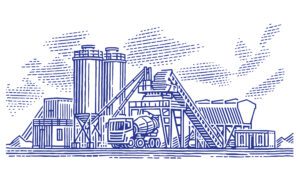Hail to the Chief Manufacturing Officer?
A version of this article was originally published in Smart Industry.
The U.S. manufacturing industry has often been on the political agenda. Early in the campaign season, former presidential candidate Rep. Tim Ryan has called for the creation of a chief manufacturing officer position to be added to the Cabinet. The industry also was prominently highlighted in political discussions when the National Association of Manufacturers pledged to upskill and train 1.2 million workers to close the skills gap and address our widespread talent shortage.
Commitments like these are a good start, but much more needs to be done. While the manufacturing industry is indeed an important debate topic, the key issues often get misunderstood.
The manufacturing sector needs more than small gestures. We need to re-imagine its future, and part of that means figuring out a way to engage the best and brightest talent who, in ever increasing numbers, are ignoring this critical industry.
Domestic manufacturing should be the heartbeat of every economy. U.S. manufacturers must do a far better job of attracting the type of skilled and semi-skilled employees for both the “now” and the future of manufacturing. We know that machine automation and advanced robotics can increasingly execute repetitive tasks; humans are needed to manage more and more sophisticated machines, while interpreting a huge increase in operational data.
Ryan’s idea of a national chief manufacturing officer is compelling, and there are some key advancements that already exist in industrial technology that can sway the future of manufacturing. 80% of all workers globally (equivalent to around 2.7 billion people) are part of the often forgotten “deskless” workforce. In these environments, technology that connects workers to each other and to machines will enable them to be more efficient, communicate easier with colleagues, reduce error on the factory floor, and bring paper-based work execution into the mobile, digital age. This kind of tech-first environment will not only remove roadblocks that industrial workers face, but will also make the entire sector more attractive to younger, up-and-coming talent.
The competition for workers with the right skills is stiff; look no further than what the major tech giants are doing to recruit those with technical and engineering backgrounds. In-demand talent wants to use their skills effectively. These workers have little patience with factors outside of their control that make their work more difficult and less rewarding – things like outdated, inefficient workflows and paper-based processes, which unfortunately are still common on the factory floor. The days of providing workers with a six-inch binder as the primary way for them understand how to execute tasks should be long gone, but it’s still very much today’s reality.
Instead, we need to make sure these young professionals have access to digital tools and ongoing training that make their work more collaborative, consistent and transparent. Mobile-first, digital technologies can not only provide a framework to ensure all work is executed right the first time, every time, but these tools also unlock a rich new source of operational-improvement data.
Finally, it’s clearly in the best interest of manufacturers to rapidly accelerate to a tech-enabled operational environment for their frontline workers. This new way of working yields more data-driven insights and learnings about how work is being done.
With this new data, companies can identify efficiencies and gaps across their entire operations, ultimately driving smarter decisions as well as the ability to make real-time adjustments where needed. It’s not just about efficiency; it’s also about driving greater product/service quality and delivering new levels of safety.
Reviving manufacturing in this country and attracting the best and the brightest to this sector means that a connected, digital-first workforce must be part of the “now” and also part of the future.






